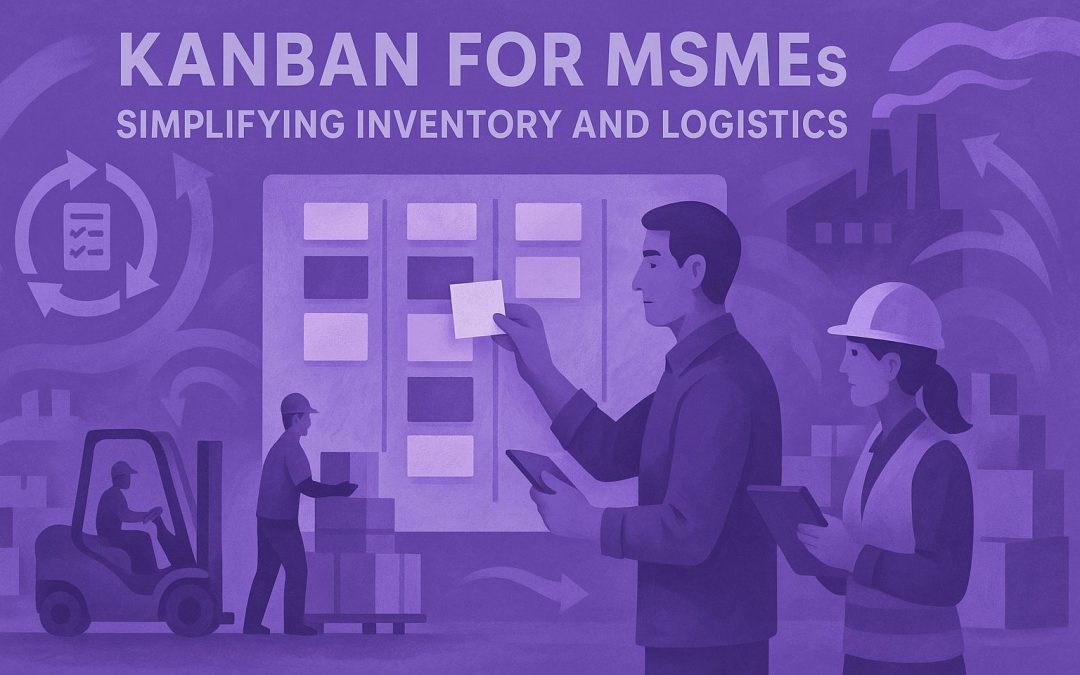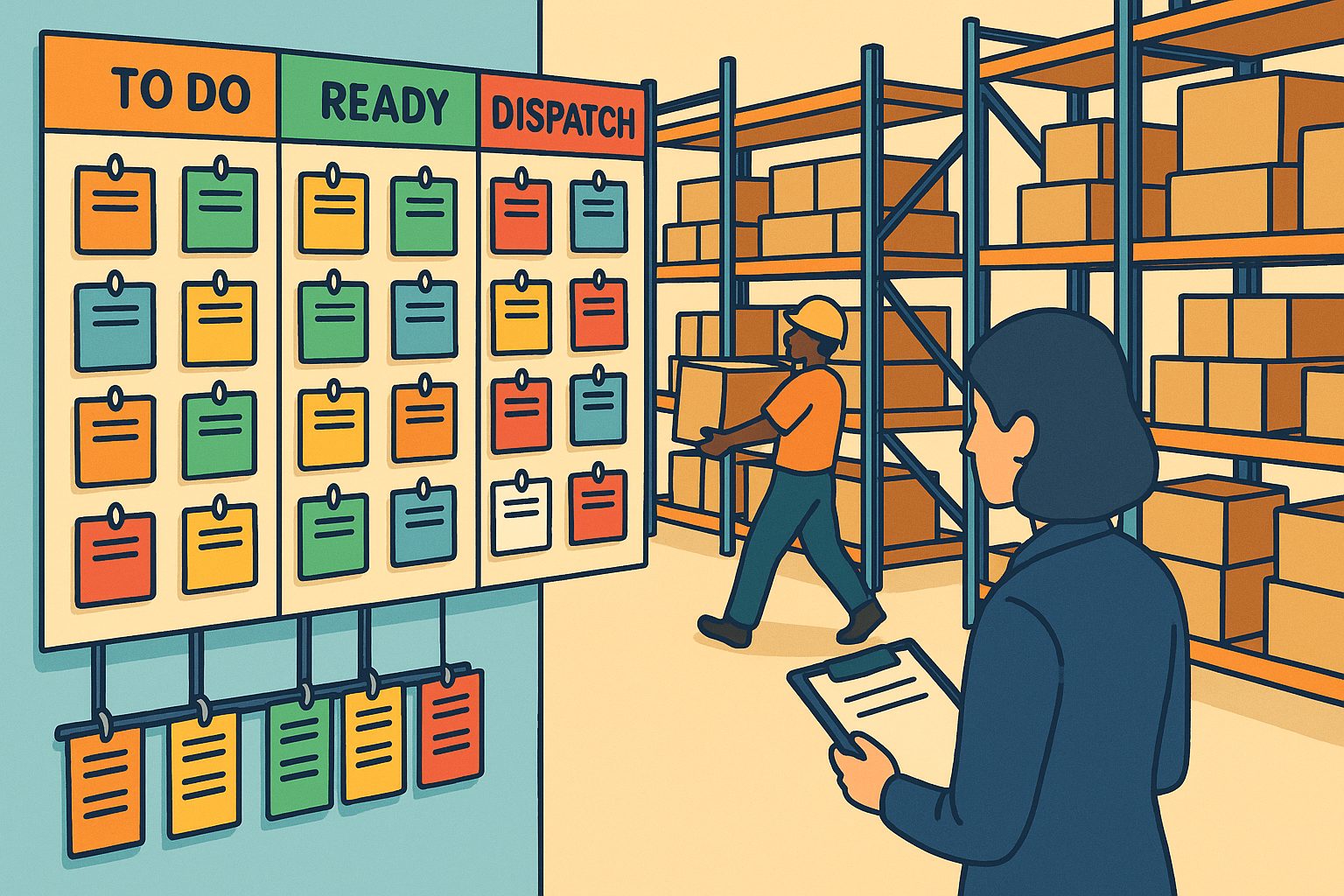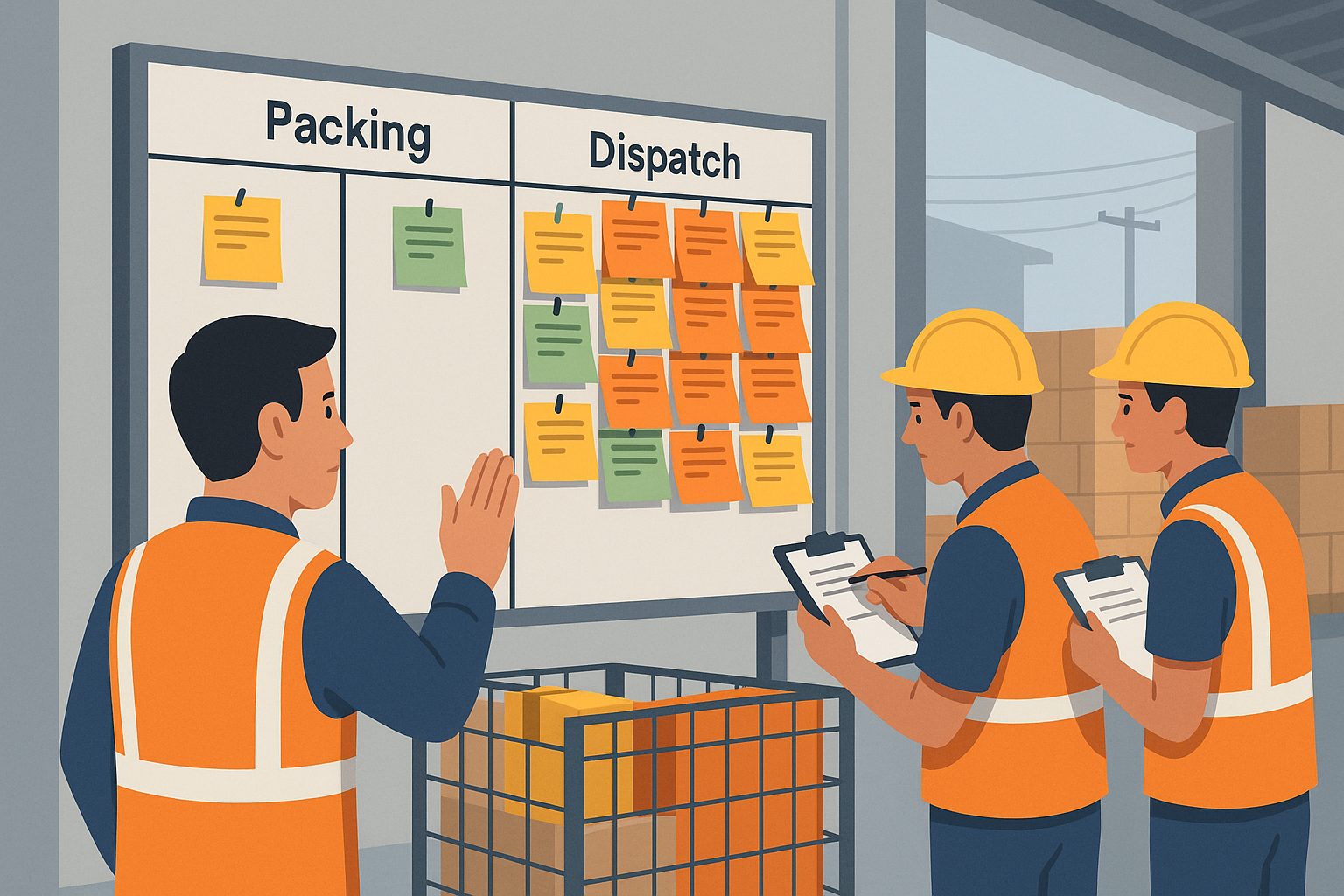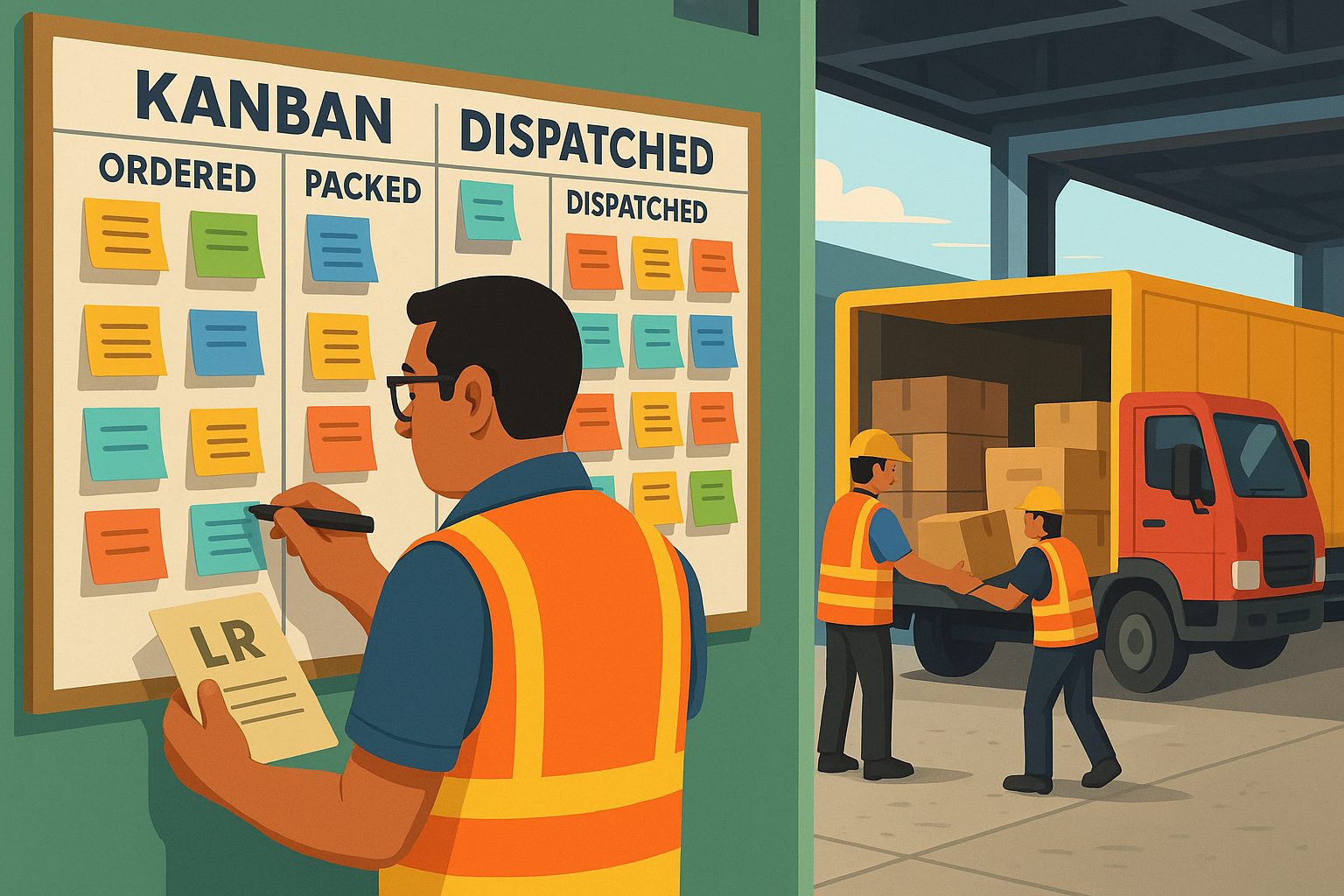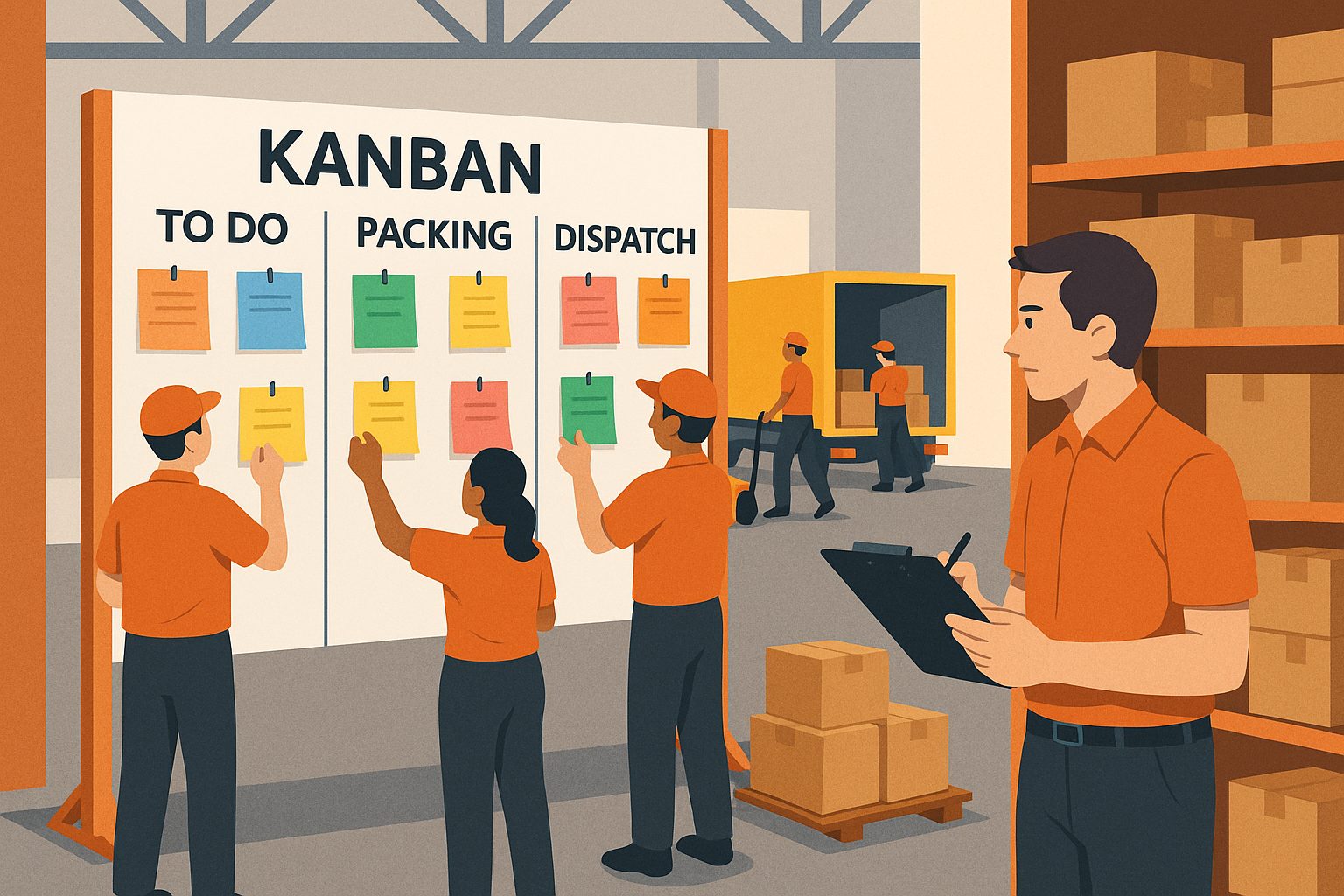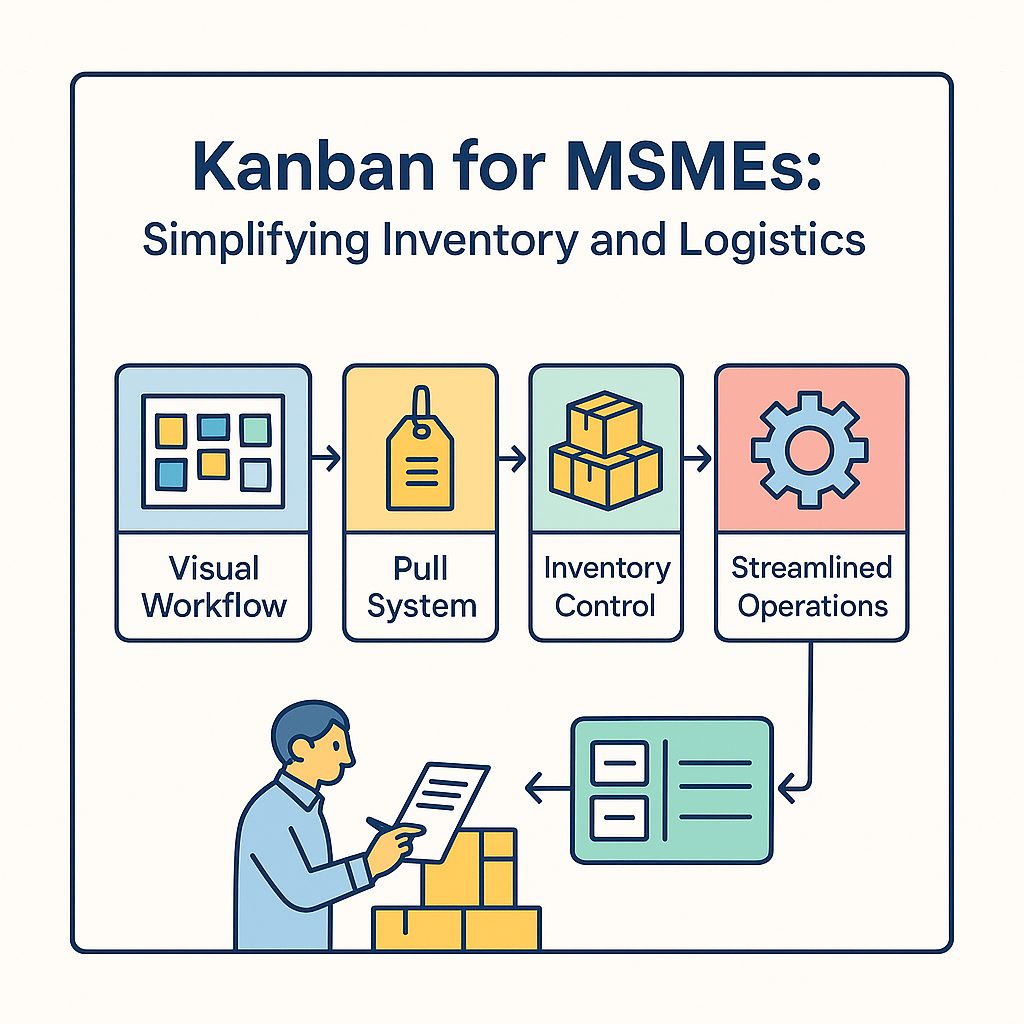Table of Contents
No MSME in India has the luxury of letting inventory gather dust. One slow-moving part in the back of your godown can block cash flow for weeks, sometimes months. For dispatch managers and small business owners, kanban isn’t a buzzword—it’s a survival tactic. Every box on a kanban board stands for real money on the shelf. Miss a signal, and you’re either running out of stock or sitting on a pile nobody wants.
What most MSMEs miss when sorting out their dispatch schedules is the invisible leak—stock that should’ve moved last week, or a fresh order that nobody flagged in time. Kanban brings that mess into the open. No more relying on memory or guesswork. Every LR, every docket number, every pallet gets a place on the board, and suddenly, bottlenecks become impossible to ignore.
Take the case of a Pune-based hardware supplier. Every monsoon, returns would pile up because of damaged packaging—orders sent in a hurry, stock pulled without checks. Once they started using kanban cards for every batch leaving the warehouse, damages dropped, and so did the midnight “where’s my order?” calls from clients. It’s not magic, it’s discipline.
Kanban isn’t just for the big boys or Japanese factories. It’s the backbone of just in time inventory, and it’s built for businesses that can’t afford waste. MSMEs using kanban notice quicker stock turns, fewer delivery disputes, and—most importantly—fewer unpleasant surprises on their P&L statements.
What is Kanban? Core Principles Explained
Kanban, for MSMEs, is less about fancy software and more about common sense. At its core, kanban means “signboard” in Japanese. In real-world Indian logistics, it’s any system that shows you—at a glance—what needs moving, what’s running low, and what’s about to clog your shelves.
The basic idea? Visual management. Cards, sticky notes, plastic tags—whatever works—move along a board marked for each stage: ordered, received, ready to ship, dispatched. No more lost papers, no more “Did we restock that gasket?” Kanban cuts through the noise.
Most MSMEs, when they hear “kanban,” think it’s for big companies with rows of barcode scanners. Reality check: even a small packaging unit with five employees can use a wallboard and color-coded cards to track stock. It’s not about going digital overnight. It’s about making sure everyone—from loaders to the warehouse supervisor—can spot a shortage or an overstock before it becomes a crisis.
Here’s a common mistake: treating kanban as a one-time setup. It’s a living system. If the “ordered” column fills up, you’ve got a problem. If nothing moves to “ready to ship” by noon, someone’s slacking—or something’s broken in your vendor chain.
Scenario: A Surat-based textile unit handling five orders a day switched to kanban cards. Within a month, misplaced orders and “urgent” phone calls to the warehouse manager dropped by half. What changed? Everyone could see what was in progress and what needed action, no more back-and-forth or wasted time hunting through paper LRs.
Kanban thrives in Indian MSMEs because it brings order to chaos. It’s not rocket science—it’s pure, practical workflow optimization.
How MSMEs Can Implement Kanban in Logistics
Most MSMEs think they need fancy tech or expensive consultants to get started with kanban. Not true. A roll of tape, some chart paper, and a box of markers will do the job. The first step is to map your process—break it into clear stages: received, in storage, picking, packing, dispatch. Make each stage visible on a kanban board, either on the wall or even using whiteboards near the dispatch area.
Next, assign a card, tag, or slip to every batch, order, or key item. Cards move with the goods. When a batch moves from “storage” to “packing,” the card does too. This is how you track stock in real time, with zero guesswork. If your delivery frequency is irregular, make sure to adjust the columns or add a “priority” lane for urgent orders. Kanban is flexible—what matters is that every movement is visible to everyone.
One tip for MSMEs: don’t let the board gather dust. A board that doesn’t get updated is worse than no board at all. Assign someone to review it at the start and end of every shift. If possible, snap a photo daily. This way, even if the supervisor’s off, nothing falls through the cracks.
Consider the case of a Nagpur-based agro supplier. Before kanban, urgent dispatches got buried under bulk orders, leading to missed slots with transporters. After introducing a color-coded board, “urgent” batches moved up the queue automatically, and their average turnaround time (TAT) improved by nearly 20%. No new hires, just better visibility.
Kanban adapts to both physical and digital setups. Some MSMEs use WhatsApp photos of their boards to update remote owners or partners. For those ready to level up, digital kanban tools can integrate with basic inventory management apps, but the fundamentals remain the same—keep it visible, keep it honest.
Common Pitfalls and How to Avoid Them
Kanban looks simple. That’s exactly why many MSMEs stumble after their first attempt. The biggest mistake? Treating kanban as a “set it and forget it” tool. A static board is a dead board. If nobody updates the cards or tags after each movement, chaos returns fast. Every update missed is an invitation for stockouts, lost dockets, or delays in order fulfilment.
Another trap: overloading columns. When “packing” or “dispatch” starts looking crowded, it’s a clear sign that something’s stuck—maybe a vendor delay or staff shortage. Most warehouse teams just work around the pile-up, thinking it’ll sort itself out. It rarely does. Instead, use the congestion as an early warning to dig deeper. Fix the bottleneck before it turns into lost business.
Some MSMEs go all-in on digital kanban tools right away. What happens? Staff ignore the app, or spend more time clicking than moving goods. If your team isn’t comfortable with tech, stick to physical boards until everyone’s on the same page. Remember, the best kanban system is the one your team actually uses—consistently.
Training is critical. Don’t assume workers will “pick it up” as they go. Run short demos. Put up cheat sheets. When every loader and checker understands the flow, mistakes drop and accountability rises. One missed update on the board can throw off the entire day’s dispatch. Kanban thrives on discipline, not software.
Case in point: A Coimbatore-based machinery parts dealer saw shipments delayed when their digital kanban notifications were ignored during peak hours. Switching to a simple magnetic board near the loading bay kept everyone in the loop—no more “I didn’t see the update” excuses, just smooth, steady dispatches.
Choosing the Right Tools and Logistics Partners
Selecting the right tools and logistics partners is what separates smooth warehouse floors from ones cluttered with missed shipments and endless excuses. Many MSMEs rush into kanban thinking any tool will do, or that their existing logistics provider can just “adjust.” Reality is less forgiving. The tools you pick, and the people who handle your goods, will either make kanban sing—or turn it into just another pretty board on the wall.
Physical vs Digital Kanban: What’s Right for Your Team?
For most Indian MSMEs, starting with a physical kanban board is faster and easier. Tape, markers, and tags—nothing fancy, just something the whole team can see and touch. Physical boards work best in environments where not everyone is comfortable with apps or computers. It’s direct, and nobody gets left out.
However, as volumes grow or if you run multi-location warehouses, digital kanban tools start making sense. These platforms can auto-update, link with inventory management systems, and send alerts when stocks run low. For MSMEs with tech-savvy teams, digital kanban offers real-time supply chain visibility and smoother coordination with remote partners. What most MSMEs miss is the risk: if the app is too complicated or buggy, people stop using it and fall back to memory—then the system breaks down.
What to Ask Logistics Partners
Your logistics provider plays a huge role in how well kanban delivers results. Don’t just look for the cheapest rate. Ask if their team can adapt to kanban-style order releases. Can they handle frequent, smaller shipments? Do they provide reliable TAT (turnaround time) and share clear LR (lorry receipt) numbers on time?
Here’s a practical tip: Always request sample docket numbers and reports from prospective partners. If their process doesn’t line up with your kanban board—say, if they can’t provide quick status updates—delays and mix-ups will keep happening. It’s better to lose a few rupees per shipment than lose clients due to unreliable service.
Metrics That Matter
When evaluating logistics partners or kanban tools, stick to the metrics that move the needle:
- TAT (Turnaround Time): How quickly do they move goods from your warehouse to delivery points?
- Order Fulfilment Rate: What percentage of orders get delivered on time, without damages?
- Stock Turns: Are you moving inventory quickly, or is it sitting idle?
One Hyderabad-based apparel trader switched partners after tracking TAT and finding frequent delays with their old provider. Post-switch, not only did stock move faster, but their kanban board started showing fewer congested “dispatch” lanes—proof that the right partnership can smooth out your workflow.
Kanban Success Stories from Indian MSMEs
Success with kanban rarely makes headlines, but on the warehouse floor, it’s often the difference between overtime chaos and clockwork dispatches. Indian MSMEs are discovering that even basic kanban systems can transform their daily operations. Results aren’t always dramatic, but they’re consistent—better order fulfilment, tighter inventory control, and fewer unpleasant surprises.
Take a Mumbai-based spare parts distributor. Before kanban, orders often missed the afternoon courier cutoff because paperwork lagged behind packing. Introducing a simple kanban board—just columns on a whiteboard with order slips—changed everything. Now, as soon as an order is packed, its slip moves forward. If the “dispatch” column looks crowded by noon, the team knows they’re at risk of missing deadlines. Over the first quarter, their late shipment rate dropped by almost 30%. Clients noticed.
Another example: A Jaipur-based home decor exporter struggled every month-end with inventory discrepancies. Too many hands, too many last-minute “urgent” orders, and no single source of truth. By assigning color-coded kanban cards to high-priority SKUs and updating the board every evening, misplaced goods nearly vanished. Inventory audits, which used to drag on for hours, now wrap up before lunch.
One more: A Guwahati food packaging unit faced regular overstocking of packaging rolls—a costly drain. Implementing kanban meant rolls only got reordered when the “reorder” card surfaced. Within six months, working capital locked in excess packaging was cut by 40%. What most MSMEs miss is that kanban isn’t just about speed; it’s about freeing up cash for actual growth.
These stories aren’t one-offs. MSMEs in manufacturing, trading, and even e-commerce are seeing similar gains by making kanban part of their daily routine. The secret? Start simple. Let the board become your warehouse’s single source of truth. Tweak the process as you go, but stick with it—results follow discipline, not size.
Conclusion
Here’s what most guides won’t say—kanban isn’t about buying fancy apps or hiring consultants. It’s about not losing your temper when your warehouse guy shouts, “Where’s the docket?” for the third time this morning. It’s about not finding six-month-old packing tape behind the last shipment of monsoon tarps. Kanban, when it works, is just the whole team agreeing: “No more guesswork, no more blaming the night shift.”
Start with what you have. If all you’ve got is a wall and a fat marker, you’re set. Get everyone to write it up, move the tags, argue about missing stock in plain sight. Don’t expect overnight miracles. The first week, someone will forget to move a card. The second week, you’ll run out of space. By the third, you’ll wonder how you ever managed without it.
MSMEs don’t have a safety net. If your stock gets stuck, you eat the cost. If a delivery is late, the client starts calling someone else. Kanban is just a way to stop that slow bleed. It keeps everyone honest, even the boss.
You don’t need a training manual or a motivational poster—just a routine and a bit of patience. Before long, the board stops being “extra work” and starts being the one thing nobody wants to skip. That’s when you know it’s working. Not when the consultant says so, but when your loader does it without being told.
Need reliable logistics solutions for your business?
Tata nexarc helps businesses streamline their supply chain with trusted transporters, competitive pricing, and real-time tracking—ensuring timely and cost-effective delivery across India.
FAQs
What’s the difference between kanban and a traditional inventory checklist?
Can kanban work for MSMEs with irregular or seasonal demand?
How does kanban integrate with third-party logistics (3PL) providers?
What materials can be tracked with kanban besides finished goods?
Is kanban suitable for businesses with limited floor space?
How can kanban help prevent courier delays?
What’s the role of color coding in a kanban board?
Can kanban work alongside existing ERP or inventory software?
What’s the first sign that a kanban system isn’t working?
Is kanban effective for MSMEs in sectors like e-commerce or retail?
Ananya Mittal blends a background in data science with a passion for writing, contributing to Tata Nexarc’s efforts in creating insightful, data-informed content for MSMEs. Her work focuses on exploring sector-specific challenges and opportunities across procurement, logistics, and business strategy. She is also involved in leveraging analytics to strengthen content performance and deliver actionable insights to India's growing B2B ecosystem.
